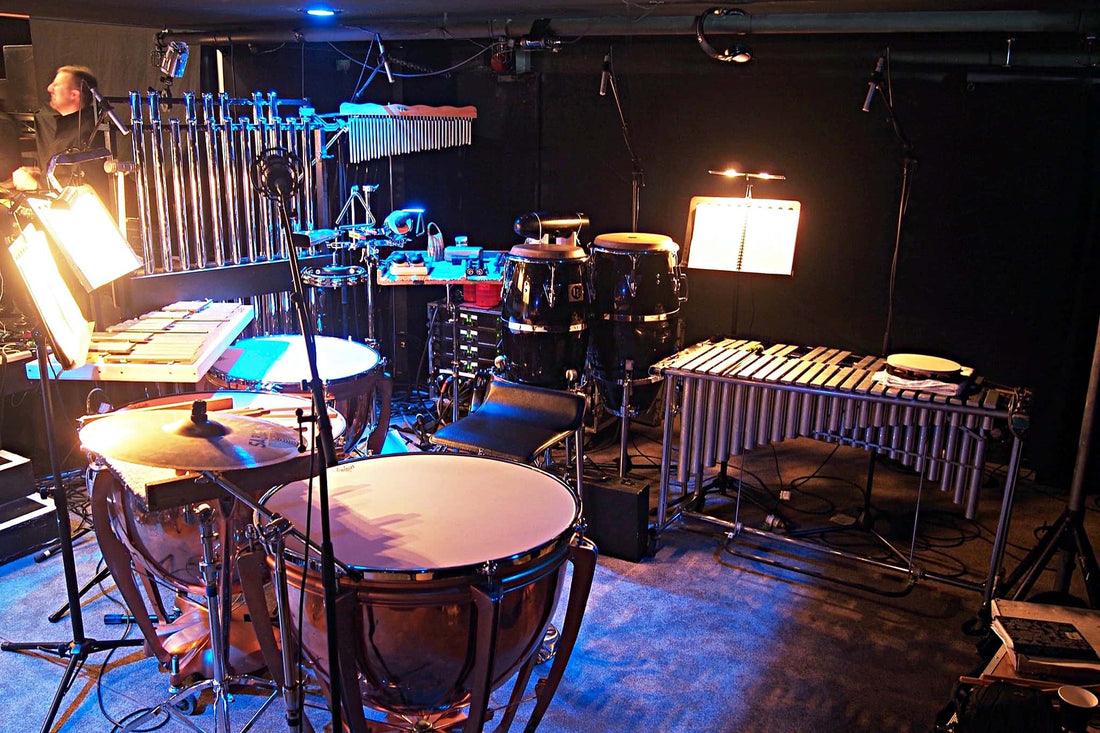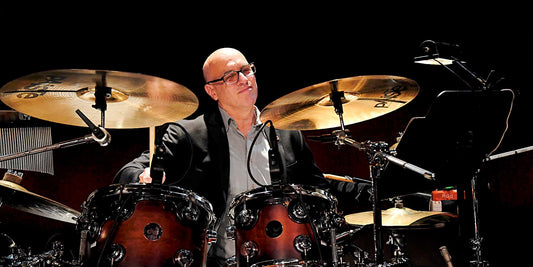
Hairspray - Craig Given
Craig Given's percussion setup for Hairspray at the Isaac Theatre Royal in Christchurch, New Zealand, for Showbiz Christchurch.




"This was a great show to play. Physically and mentally very busy (head in the score most of the time!), not much time to rest, but the sort of challenges that all percussionist enjoy! The timpani parts are fantastic but very busy with a lot of tuning in some of the numbers. There is plenty of scope in the show for the percussionist to think about different sounds and mallets to complement the style of each number. Most of the mallet parts are fairly straight forward, just some exposed bits and fast instrument changes to get under your belt. There are also lots of nice moments of interaction between the drums and the percussion.
Mallet choice in this show is really important. Firstly to try and support the music style, and on-stage context, but also due to some very fast instrument changes.
For the timpani I used a range of mallets from big soft Vic Firth Custom Generals (on tunes like 'Timeless to me') right through to Ultra-Staccato/Hard Felt ('Miss Baltimore Crabs') and wood mallets ('Scatter Dodgeball') for some numbers where I wanted a very dry sound with a lot of attack.
Vic Firth T3 Staccatos were my go-to 'general-use' timpani mallets and what I used for most of the timpani and mounted tambourine numbers.
I made some special double sided mallets to deal with the fast changes between glock and timpani in 'I Can Hear The Bells'. They were essentially hard PVC balls mounted on old snare sticks with a layer of felt glued on one hemisphere (for timpani). In this chart you really need to have your wits about you and have the tubular bell mallet, cabasa and castanets at hand for some very fast changes.
All other mallets are really just selected depending on the context to the on stage action and what is marked in the part. For example, I vary from brass mallets to PVC to very light aluminum.
Last note to make, and probably the most important, you must have timpani that are in good condition (reliable tuning gauges) and fast to tune (pedal timpani!). In some tunes (e.g: 'Good Morning Baltimore') you are tuning almost every bar in some sections. Accuracy, precision, and reliability are a must!
I tend to spend a couple of sessions with the score just notating all the required timpani tunings, creating a tuning map and then marking up my scores as needed. Often in this show I'm tuning a drum for a note I don't need until a page later, so it's really important to get the choreography between instrument changes, tunings, mallet changes, etc... on paper and into your sub-conscious ahead of the first orchestra rehearsal!
This was my second musical this year using my glockenspiel that I made (Prototype v1!), still a work in progress. I've always wanted to make a glockenspiel, and so bit the bullet earlier this year after much research. I've used a fairly stock-standard steel (with a high carbon content) but am reasonably happy with the result. Although the top few notes I will probably re-do at some point in the near future, as I know that they could be a bit better. For now I've left the notes in their 'raw' state with the manufacturing 'scale' still on them and my tuning markings in sharpie!. At some point I will look at polishing and nickel plating options. For now, I'm happy enough with the instrument as it is."
Gear:
- Premier Timpani (31", 28", 25")
- Premier Vibraphone
- Accent Tubular Bells
- Given Guild Glockenspiel (prototype v1 - custom made by Craig)
- LP Congas
- Mark Tree
- RhythmTech Tambourine (handheld for all the 16th note parts!)
- Grover Tambourine with Head
- Meinl Tambourine (mounted)
- Various Shakers
- Castanet Machine
- Miller Machine with TreeWorks 6" Triangle
- Grover 4" Triangle
- Meinl Guiro
- Grover Wood Block
- Cabasa
- Sleigh Bells
- Large Suspended Cymbal
Hairspray - International - Craig Given
June 2016









